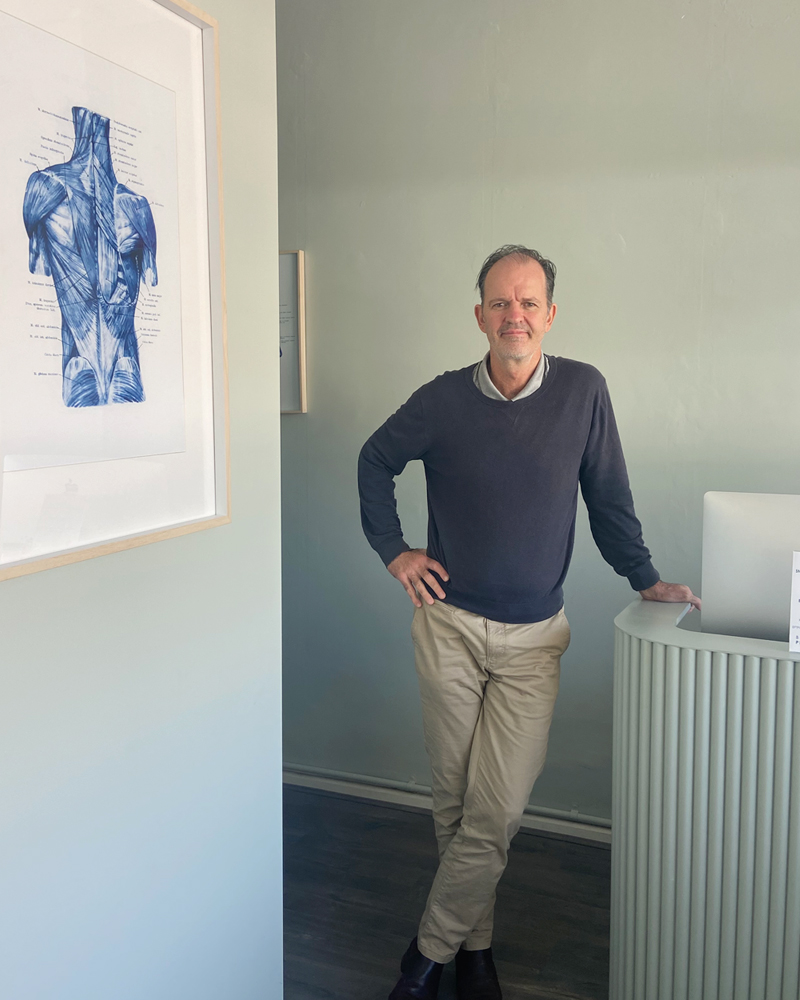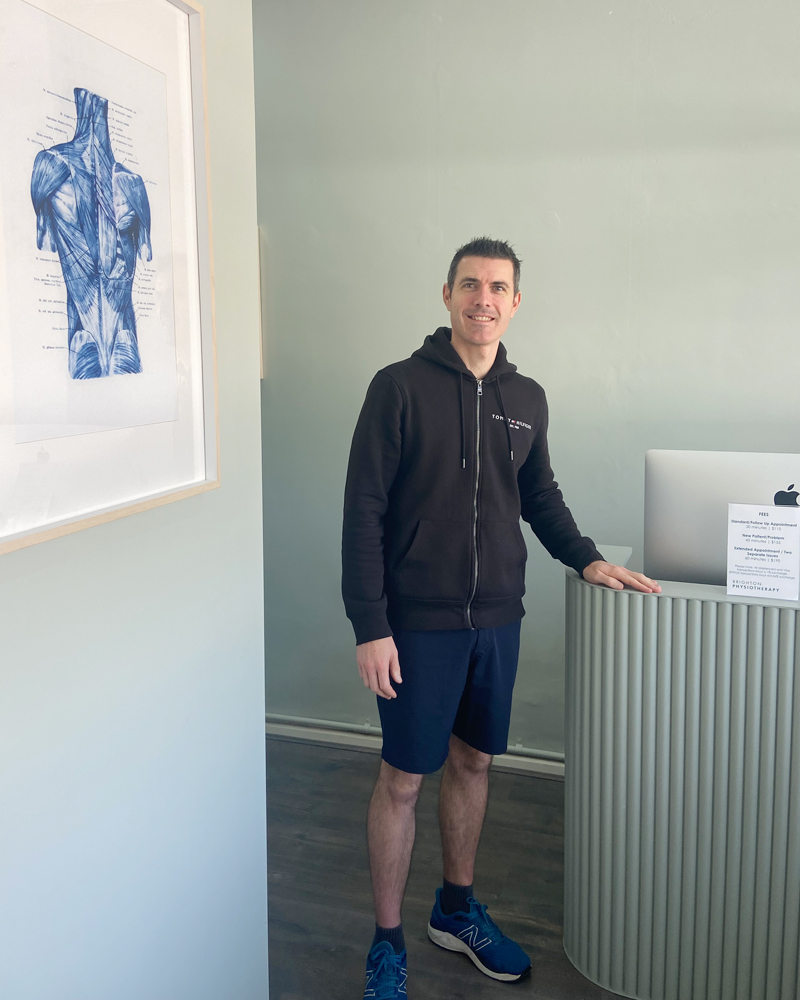Spinal Physiotherapy
Spinal Physiotherapy: Targeted care for back health and mobility.
If you or a loved one has had a spinal injury, Brighton Physiotherapy can play a key role in individual treatment and recovery, as well as long-term rehabilitation. We have highly trained physiotherapists who will assist in improving your mobility, independence, and ability to participate in the activities that matter to you.

Meet your Physios.
Paul Trainor
APA Titled Sports and Exercise Physiotherapist Bach App Sc (Physio) Mast (Sports and Exercise)
Ryan Cope
Bachelor of Physiotherapy
Master of Exercise Science (Strength and Conditioning)

Personalised Spinal Rehabilitation: Strengthen and restore with tailored exercise programs.
Exercise programs prescribed in spinal physiotherapy often aim to strengthen the muscles supporting the spine, improve flexibility, and promote better posture. We will provide you with access to your own unique set of fully-narrated exercise videos which you will be able to perform from the comfort of your own home, or in a gym setting. These exercises will help to rebuild the strength of your spine in order to speed up your recovery and return to day-to-day activities.
Rehabilitation from a spinal injury considers the individual, and focuses on enabling maximum independence.
Common Conditions.
Low back pain refers to pain in the area between your lowest ribs (around your waist) and your bottom. Acute refers to pain that started recently. Non-specific means the cause of the pain is not serious or trigged from arthritis, infection or sciatica (an irritated nerve in your back). It also means that it is not possible to find a specific source of the pain (eg, joint, muscle, ligament, disc). Most low back pain is non-specific. Even the best imaging techniques cannot identify what is causing your back pain.
Persistent low back pain is low back pain that has lasted for longer than six weeks. Like acute low back pain, most persistent low back pain is non-specific. Non-specific means the cause of the pain is not serious or trigged from arthritis, infection or sciatica (an irritated nerve in your back). It also means that it is not possible to find a specific source of the pain (eg, joint, muscle, ligament, disc). Even the best quality imaging techniques (eg, a CT scan or an MRI) cannot identify what causes most persistent low back pain.
Stenosis is a medical word for narrowing. In this case, it refers to the narrowing of the spinal canal—a passage formed by the vertebrae (spinal bones) that allows space for the spinal cord to run down the middle. As you age, your spinal canal naturally becomes narrower. In some arthritic conditions such as osteoarthritis and rheumatoid arthritis, the canal becomes so narrow that the blood supply to the nerves in your spinal cord reduces. This can be associated with pain, numbness and weakness in both legs. While it sounds scary, spinal canal stenosis is reasonably common. In many cases, people who have signs of spinal canal stenosis on an X-ray or MRI have no symptoms whatsoever. It most commonly affects people over the age of 60.
Axial spondyloarthritis (axial SpA) is a less common cause of low back pain. Sp stands for spondylitis, which is the medical term for an inflamed spine. About 5 in every 1000 people with back pain are diagnosed with axial SpA. Axial SpA is group of conditions that involve long-term inflammation of the joints and ligaments of the spine, as well as other body parts. For example, in addition to back pain, people with axial SpA might report having other painful joints, red and irritated eyes or skin, or an upset stomach. Axial SpA is more common in men and in those under the age of 40.
Radicular pain is a type of back pain that spreads from the back and travels down the leg below the knee. Sometimes there is no back pain and only leg pain. This sort of leg pain is thought to originate from irritated nerves near the spine. A more general term for this problem is sciatica. However, sciatica is usually used to describe pain down the back of leg—it does not indicate that the sciatic nerve, which is located in the muscles of your buttock and is about as thick as your thumb, is irritated or pinched. Rather, the problem is normally with a nerve branch that can get irritated where it exits the spine. This can lead to different regions of the leg becoming sore, depending on which nerve branch is irritated. Item description
Consultation Process.
Begin your recovery journey with a comprehensive 45-minute initial assessment. We recognise the importance of a thorough understanding of your injury and dedicate the necessary time to conduct a meticulous evaluation



